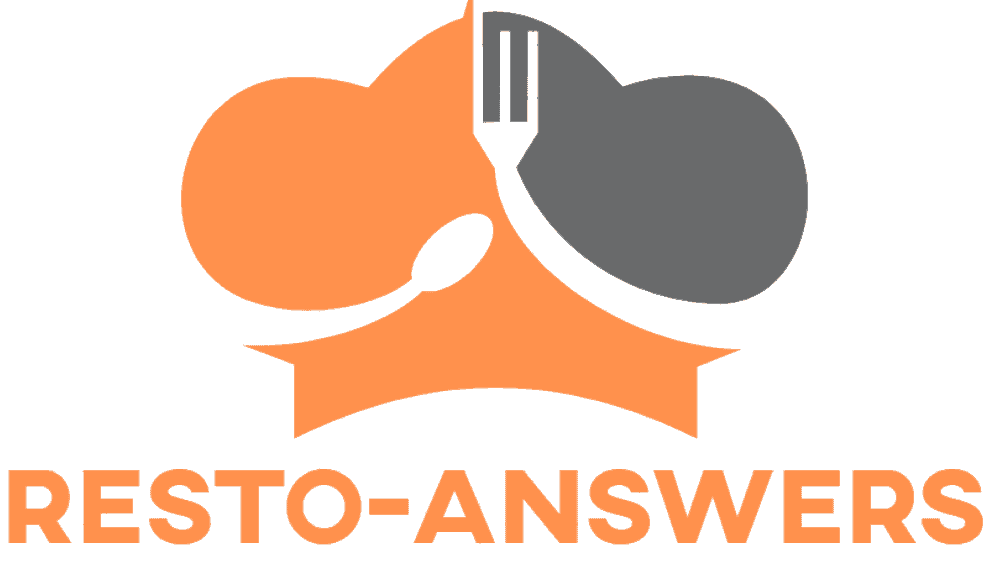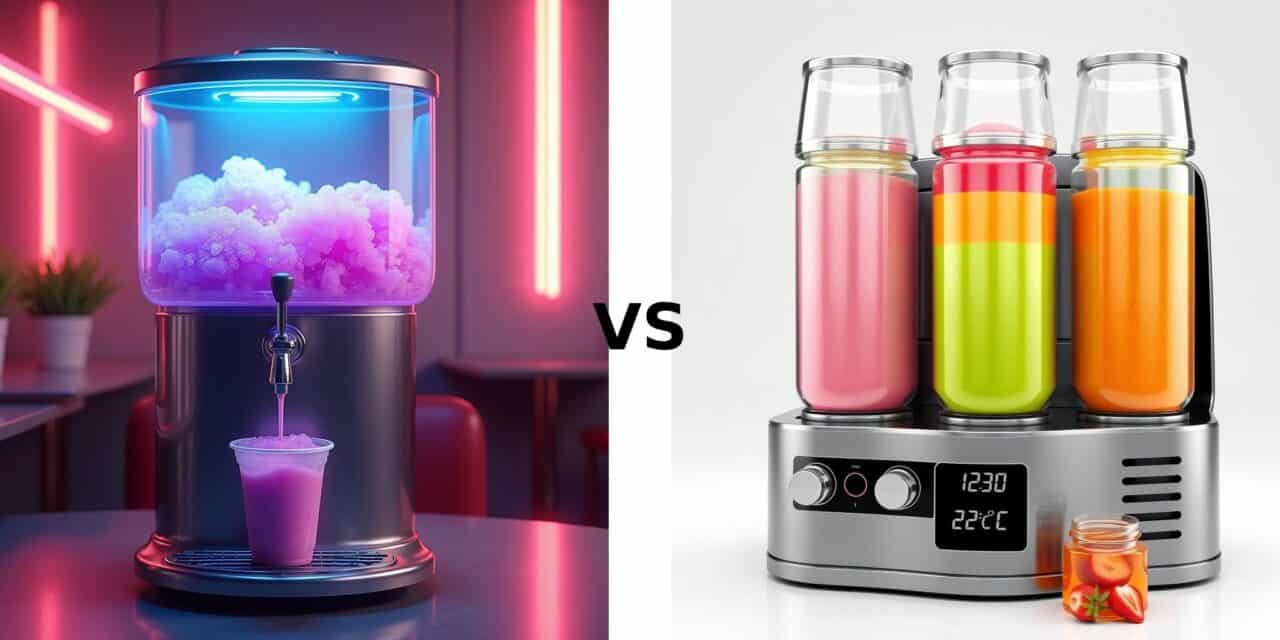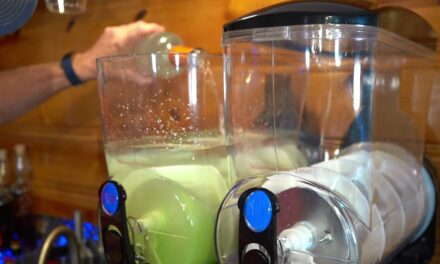As a restaurant owner, I understand that every equipment investment must be thoroughly evaluated—not just for its upfront cost but also for its long-term impact on operations. When I first considered adding a commercial slush machine to our menu, I faced a crucial decision: Should I go for a high-capacity triple-tank machine or opt for a compact single-tank model? Below, I elaborate on the key aspects of each option, breaking down price, power consumption, space requirements, output capacity, and profitability.
1. Upfront Cost: The Price Tag Difference
Let’s begin with the primary concern: the initial investment.
Triple-Tank Model (3x15L):Click here for the price: use code: VEVORAFF to receive 5% off your Order
Expect to pay: $1,200–$1,500 upfront for this powerhouse.
This model comes with three independent tanks, robust compressors, and the capacity to serve multiple flavors simultaneously. While the cost is significantly higher, the design is tailored for venues that anticipate high customer turnover.
Single-Tank Model (15L): Click here for the price: use code: VEVORAFF to receive 5% off your Order
The smaller, simpler version costs $500– $700, making it a budget-friendly choice for startups or seasonal businesses.
For restaurateurs just dipping their toes into the slush business or those with limited space and demand, this model offers an attractive balance between cost and functionality.
The Takeaway:
Although the triple-tank machine requires more than twice the initial investment, its robust capabilities can justify the higher price tag in a high-traffic environment.
2. Power Consumption: Monthly Energy Bills
Running a slush machine comes with an ongoing energy cost—a critical factor for any business. Here’s what you’ll pay monthly (based on 10 hours/day at $0.15/kWh):
Triple-Tank (3x15L):
Uses 1,200–1,500 watts →$54–$67/month.
The higher wattage of the triple-tank model means that while you are getting more output, you’ll also face a higher monthly energy bill. This is a consideration for operations that run long hours.
Single-Tank (15L):
Sips 600–800 watts →$27–$36/month.
With lower energy consumption, the single-tank model helps reduce monthly expenses, which can be especially beneficial during off-peak seasons.
Pro Tip:
If your business operates seasonally, the energy savings from a single-tank machine can provide a welcome financial cushion during slower months.
3. Space Requirements: Will It Fit?
Space is often at a premium in busy kitchens and service areas. It’s important to choose equipment that fits seamlessly into your layout.
Triple-Tank (3x15L):
Roughly 35″ wide x 20″ deep x 30″ tall—think “mini fridge” size.
This model requires dedicated floor or counter space and is best suited for venues such as bars or event spaces where space can be allocated for larger equipment.
Single-Tank (15L):
Compact at 20″ wide x 18″ deep x 28″ tall.
Its smaller footprint makes it ideal for food trucks, small cafés, or pop-up stands where every inch counts.
Fun Fact:
A triple-tank’s footprint is about 2.5x larger than the single-tank, which directly influences where and how you can deploy it in your establishment.
4. Output Capacity: How Many Cups Can You Sell?
The potential to serve a large number of customers translates directly into profitability. Here’s what you can expect:
Triple-Tank (3x15L):
- 45L total capacity → 180–225 cups/day (3 flavors, 200ml/cup).
- Serves on an average 200+ daily customers (e.g., festivals, stadiums).
- Requires refilling every 4–5 hours during peak rushes.
Single-Tank (15L):
- 15L capacity → 60–75 cups/day.
- Ideal for 50–100 customers (e.g., coffee shops, ice cream parlors).
- Needs to be refilled every 2–3 hours on busy days.
Understanding these capacities is essential to forecast revenue and ensure your machine aligns with the volume of customers you expect.
5. Profitability: When Will You Break Even?
Profitability is the bottom line, and here’s how each machine fares based on assumed sales:
Let’s assume each 200ml slushy sells for $4 with a $1.50 cost per cup (syrup, cup, labor).
Now lets calculate the profitability of Triple tank vs Single tank Slush Machine
Triple-Tank (3x15L):
- Daily profit: (225 cups x 4) −(Cost: 225 x 1.50) – (Energy calculated in step 2: $67)
= 900 – 337.50−67 = $495.5/day.
- Break-even time: At $1,500 upfront, you’ll recover costs in ~3 to 4 days if running at full capacity.
Single-Tank (15L):
- Daily profit: (75 cups x 4) − (Cost: 75 x 1.50) – – (Energy calculated in step 2: $36)
= 300 – 112.50−36= $151.5/day.
- Break-even time: At $600 upfront, you’ll recover costs in ~4 days at full capacity.
Key Note:
These calculations assume perfect sales conditions. It’s vital to adjust these figures based on your specific location’s demand and seasonality.
6. Who Should Buy Which Model?
Determining the best option depends largely on the nature and scale of your business.
Choose the Triple-Tank (3x15L) If:
- You run a high-volume business (bars, amusement parks, concert venues).
- You need 3+ flavors to attract a diverse customer base.
- You can comfortably manage to invest $1,500 upfront + 67/month energy cost.
Choose the Single-Tank (15L) If:
- You’re a small business (food truck, café, seasonal stand).
- You want to test the slush market without a significant upfront investment.
- Your budget is under 700 with 36/month energy bills.
This decision should be guided by both your current capacity and your future ambitions.
Final Verdict
The Triple-Tank model stands as a big investment with big rewards—ideal for established businesses where customer demand justifies the premium. Click here for the price: use code: VEVORAFF to receive 5% off your Order
In contrast, the Single-Tank model is a low-risk starter option, perfect for testing the market or running small-scale operations. Click here for the price: use code: VEVORAFF to receive 5% off your Order
Conclusion
Ultimately, choosing the right commercial slush machine comes down to a careful evaluation of budget, space, and expected demand. From my experience as a restaurant owner, the triple-tank machine proved to be a profit-generating powerhouse for high-traffic settings, while the single-tank model offered an accessible way to introduce slushies into the menu with minimal risk. Measure your space carefully, crunch your numbers, and choose the model that best aligns with your business ambitions—you can always upgrade when the summer lines start snaking around the block!






